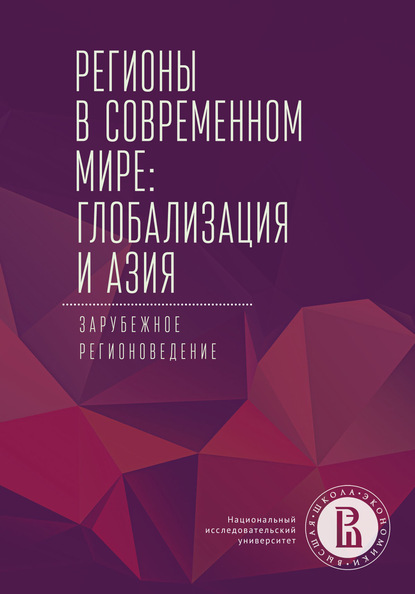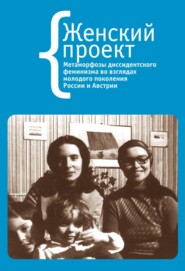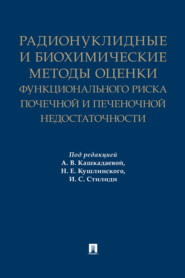По всем вопросам обращайтесь на: info@litportal.ru
(©) 2003-2024.
✖
Регионы в современном мире: глобализация и Азия. Зарубежное регионоведение
Автор
Год написания книги
2020
Настройки чтения
Размер шрифта
Высота строк
Поля
Мосяков Д. В. Глобальная трансформация Тихоокеанской Азии и России / Институт стран Востока, Институт востоковедения РАН. М., 2019. 390 с.
Мосяков Д. В., Шпаковская М. А. Китай переигрывает США в отношениях с АСЕАН // Юго-Восточная Азия: актуальные проблемы развития. 2018. Т. II. № 3 (40). С. 6–11.
Понька Т. И., Бельченко А. С., Трусова А. А. Двухвекторный подход КНР к разрешению территориальных споров в Южно-Китайском море // Вестник РУДН. Серия: Международные отношения. 2017. Вып. 17. № 3. С. 518–529.
Соколов А. А. Высшее образование Вьетнама: формы интернационализации // Вьетнамские исследования. 2017. Вып. 1. С. 212–224.
Терских М. А., Нархова Е. И. О вьетнамо-китайских торгово-экономических связях // Юго-Восточная Азия: актуальные проблемы развития. Выпуск XХХ (№ 30, 2016). С. 125–133.
Шпаковская М. А., Нгуен Т. Н. З., Куклин Н. С. Всеобъемлющее стратегическое партнерство Социалистической Республики Вьетнам и Российской Федерации: основа, содержание и принципы // Юго-Восточная Азия: актуальные проблемы развития. 2019. Т. I. № 2 (43). С. 173–181.
Шпаковская М. А. Курылев К. П., Куклин Н. С. Россия, Вьетнам и контуры «Большого Евразийского Партнерства» // ЮВА: актуальные проблемы развития. 2018. № 4 (41). С. 136–145. (на рус. яз.)
Schneier E. Structured Strategic Partnership Handbook. Lulu publishing. 2018. P. 41. 179. (на англ. яз.)
DINH C?NG TU?N. Quan h?? d??i ta?c chi??n lu???c trong quan h?? qu??c t?? hi??n nay: l?y thuy??t, th??c ti??n th?? gi??i va? Vi??t Nam [Стратегическое партнерство в текущих международных отношениях: теория, практика в мире и во Вьетнаме]. Режим доступа: URL: http://www.vjol.info/index.php/ncca/article/view/19037. (на вьет. яз)
Чан В. Т. Xu h??ng m??i d??i ta?c thay cho lie?n minh qua?n s?? [Новая тенденция: стратегическое партнерство вместо военного союза]. Режим доступа: URL: http://thanhnien.vn/thoi-su/quoc-phong/xu-huong-moi-doi-tac-chien-luoc-thay-cho-lien-minh-quan-su-461915.html. (на вьет. яз.)
References
Kanaev E. A., Korolev A. Bol’shaja Evrazija, Indo-Tihookeanskij region i otnoshenija Rossii s ASEAN // Kontury global’nyh transformacij: politi- ka, jekonomika, pravo 2019, T. 12, No 1. S. 26–43. (in Russ.)
Koldunova E. V. Jugo-Vostochnaja Azija pered vyzovami indo-tihookeanskih koncepcij // Jugo-Vostochnaja Azija: aktual’nye problemy razvitija. Tom I, No 2 (43), 2019. S. 42–53. (in Russ.)
Lokshin G. M. Strategicheskoe sopernichestvo Kitaja s SShA v Juzhno-Kitajskom more // Jugo-Vostochnaja Azija: aktual’nye problemy razvitija. Tom I, No 2 (43), 2019. S. 55–73. (in Russ.)
Mosyakov D. V. (2019) Global’naja transformacija Tihookeanskoj Azii i Rossii/ Institut stran Vostoka, Institut vostokovedenija RAN. M., 2019. 390 s. (in Russ.)
Mosyakov D. V., Shpakovskaja M. A. Kitaj pereigryvaet SShA v otnoshenijah s ASEAN// Jugo-Vostochnaja Azija: aktual’nye problemy razvitija. Tom II, No 3 (40), 2018. S. 6–11. (in Russ.)
Pon’ka T. I., Bel’chenko A. S., Trusova A. A. Dvuhvektornyj podhod KNR k razresheniju territorial’nyh sporov v Juzhno-Kitajskom more // Vestnik RUDN. Serija Mezhdunarodnye otnoshenija. 2017 Vol. 17. No. 3. S. 518–529. (in Russ.)
Sokolov A. A. Vysshee obrazovanie V’etnama: formy integnacio6nali- zacii // V’etnamskie issledovanija. 2017. Vypusk 1. S. 212–224. (in Russ.)
Terskih M. A., Narhova E. I. O v’etnamo-kitajskih torgovo-jekonomi- cheskih svjazjah // Jugo-Vostochnaja Azija: aktual’nye problemy razvitija. Vypusk XHH (No 30, 2016). S. 125–133. (in Russ.)
Shpakovskaja M. A., Nguen T. N. Z., Kuklin N. S. Vseob#emljushhee strategicheskoe partnerstvo Socialisticheskoj Respubliki V’etnam i Rossijskoj Federacii: osnova, soderzhanie i principy // Jugo-Vostochnaja Azija: aktual’– nye problemy razvitija. Tom I, No 2 (43), 2019. S. 173–181. (in Russ.)
Shpakovskaja M. A. Kurylev K. P. Kuklin N. S. Rossija, V’etnam i kontury «Bol’shogo Evrazijskogo Partnerstva» // JuVA: aktual’nye problemy razvitija. 2018. No 4 (41). S. 136–145. (in Russ.)
Schneier E. Structured Strategic Partnership Handbook. Lulu publishing. 2018. P. 41. 179 (in English)
CHan V. T. Xu h??ng m?i d??i ta?c thay cho lie?n minh qua?n s?? (Novaja tendencija: strategicheskoe partnerstvo vmesto voennogo sojuza). [Jelektronnyj resurs]. URL: http://thanhnien.vn/thoi-su/quoc-phong/xu-huong-moi-doi-tac-chien-luoc-thay-cho-lien-minh-quan-su-461915.html. (in Vietnam.)
Contemporary Sino-Myanmar Relations: Dilemma of Letpadaung Taung Copper Mine Project
WAI YAN PHYO NAING
Ph.D. (Candidate), Doctoral School of History, Faculty of Humanities, National Research University – Higher School of Economics
ywai@hse.ru
Since Myanmar was opened to the world in 2011 local and international environmental activists tried to criticize the Chinese megaprojects in Myanmar. Letpadaung Taung Copper Mine Project is one of the huge Beijing investments in the Myanmar Military government era. The lack of corporate social and environmental responsibility on behalf of the Myanmar Wanbao Company created an intolerable situation for the residents. The only Letpadaung project became a center of international dispute and a dilemma of Sino-Myanmar relations similar to Chinese mega-projects in Myanmar. It happened because the late Myanmar Military government finalized all significant Chinese investments’ agreements before they transferred country power to the civilian administration in the mid of 2010.
This condition has led to a nation-wide movement after local intermediary administrators used Phosphorus bombs to destroy the activists’ camp near the project area in November 2012. President Thein Sein founded the “Letpadaung Taung Investigation Commission” and requested Myanmar’s democracy icon and opposition leader Aung Sann Su Kyi to lead the commission. However, Aung Sann Su Kyi did not receive a warm welcome from the local people and even faced aggressive sentiment on her field trip.
Beijing became concerned with its major construction projects in Myanmar since Myanmar-Sino relations rapidly degraded after the suspension of the Myitsone Dam in late 2011. This article investigates the factors of rising anti-Chinese persuasion in Myanmar and describes the problems connecting with the Letpadaung Taung Copper Mine Project.
Keyword: Letpadaung Taung Copper Mine, Chinese Investments, Wanbao, Sino-Myanmar relations.
СОВРЕМЕННЫЙ ЭТАП КИТАЙСКО-МЬЯНМАНСКИХ ОТНОШЕНИЙ: ДИЛЕММА МЕДНОГО ПРОЕКТА ЛЕТПАДАУНГ ТАУНГ
ВЕЙ ЯН ПЬЁ НАЙНГ
аспирант, докторская школа истории, гуманитарный факультет, Национальный исследовательский университет «Высшая школа экономики»
ywai@hse.ru
В данной статье проанализированы факторы роста антикитайских настроений в Мьянме, связанные с медным рудником Летпадаунг Таунг.
С тех пор как Мьянма открылась для внешнего мира в 2011 г., местные и зарубежные активисты в сфере экологии неоднократно пытались критиковать китайские добывающие проекты на территории этой страны.
Медный проект Летпадаунг Таунг – одна из самых значительных инвестиций Пекина в эпоху военного правительства Мьянмы. Отсутствие корпоративной социальной и экологической ответственности со стороны компании Myanmar Wanbao Company создало невыносимые условия для жителей окружающих территорий.
В результате этого между местной администрацией и активистами «зеленого» движения возник серьезный конфликт. В ноябре 2012 г. разногласия между административным корпусом и населением переросли в вооруженные столкновения, в ходе которых для уничтожения протестующих были применены фосфорные бомбы. В ответ на это президент Тейн Сейн основал «Комиссию по расследованию инцидента на Летпадаунг Таунг» и обратился к представителю демократического движения Мьянмы и лидеру оппозиции Аун Сан Су Чжи с просьбой возглавить ее. Однако Аун Сан Су Чжи не получила поддержки от местных жителей и даже столкнулась с агрессивными настроениями во время поездки в пострадавшие районы.
Ключевые слова: медный рудник Летпадаунг Таунг, китайские инвестиции, Ваньбао, синомьянманские отношения.
Introduction
In March 2011, Myanmar started its new chapter by shifting from authoritarian to democratic state. Myanmar people received opportunities to express their opinion on government projects, especially for joint investments with Chinese companies. After President Thein Sein suspended Myitsone Dam General Project by listening to his fellow citizens’ demand, another one, Letpadaung Copper Mine project emerged as the next step of the antiChinese investments in that time. On the other hand, there were invisible thorns in the two countries’ asymmetric economic relations such as Myitsone Dam project, Kyaut Phyu Deep Sea port project. Therefore, the dilemmas of the Sino-Myanmar relations became acquired tense and even confrontational character.
Looking from a global perspective, China is an influential neighboring country for Myanmar. Myanmar could not neglect Beijing’s role in the world and its policies on East Asia and the Southeast Asian region. Therefore, this article stands out from the existing body that advocated the literatures pushing of Myanmar to forge close ties with Western World and the US more than China.
Methodology
Previous studies have reported the locals’ opinions on Chinese megaprojects after Myanmar democracy transition is opened by Lauren Decicca[68 - Lauren Decicca. In the Shadow of Letpadaung: Stories from Myanmar’s Largest Copper Mine // National Resource Governance Institute, 2015.]. However, he did not pay attention to the daily life of locals after the project’s commencement [Lauren Decicca, 2015]. Atsuko Mizumo focuses on details of Letpadaung Copper Mine Project connecting with Myanmar’s China policy[69 - Atsuko Mizumo. Economica Relations Between Myanmar and China // JICA Research Institute, 2016.]. Although he has researched Chinese Mine investments in Myanmar and their development, it is still necessary to do in-depth research on the Chinese interests in their project [Atsuko Mizumo, 2016].
These critical situations are concerning the Letpadaung project developed as the dilemmas of Sino-Myanmar relations until NLD’s government came to power. This research examines different primary sources such as interviews, government documents, statistics, field studies in the project area.
Main results
Monywa is the largest city of the Sagaing Division and located at the east bank of the Chindwin river in the central part of Myanmar. There are four large copper mine projects, namely Letpadaung, Sabetaung, Sabetaung South and Kyisintaung in the western part of the town. In 1978, Myanmar started Sabetaung and Kyisintaung mines, which are located next to each other. Letpaduang Copper mine project is located to the southeast of these aforementioned two copper mines. According to the report from the Amnesty, Letpaduang can produce 75% of the copper out of these four projects [Amnesty, 2015. P. 12]. At that time, the Myanmar government managed all projects according to the Socialist economic policy [Maung М., 1964. P. 1189].
In 1996, Myanmar military government opened its economy to the outside world and invited foreign direct investments. Ivanhoe Myanmar Holdings Ltd, a Canadian owned company, had passed the government tests and entered into the joint investments with Minister of Energy (1) [Amnesty, 2015. P. 20]. The agreements were not only for the Letpadaung deposit, but also for all deposits in the Monywa project. However, the existing literatures do not mention these facts, mentioning only the Letpaduang mine. Ivanhoe gave up Monywa projects and sold its 50%[70 - Open for Business? Corporate Crime and Abuses at Myanmar Copper Mine //Amnesty International, P. 99.] share to the third party when the US and the West imposed harsh sanctions on Myanmar in 2007. However, the purchaser’s identity of the Ivanhoe shares was shrouded in secrecy from the media [Amnesty, 2015. P. 99].
In March 2010, The Union of Myanmar Economic Holdings Limited (UMEHL) nationalized 7,867 acres of land for the Letpadaung project. When Chinese Premier Wen Jiabao paid a state visit to Myanmar, the UMEHL and Ministry of Mines from Myanmar side and China North Industries Corporation (NORINCO) signed a US$ 1,1 billion joint investment for Letpadaung Copper Mine Project [Maung Myoe, 2015. P. 38]. Upon investigating the background of NORINCO, it became apparent that is China’s military-owned company. The same applies to its counterpart UMEHL, that was also backed up by the Myanmar military[71 - Maung Aung MYOE. Myanmar’s China Policy since 2011: Determinants and Directions // Int. J. Journal of Current Southeast Asian Affairs, 2015. Vol. 34. No. 2. P. 21–54.]. Only Maung Aung Myoe mentioned these facts [Maung Myoe, 2015. P. 39]. A. Clapp Priscilla reported that Wanbao is a Chinese state-owned company. No one knew when the agreement took place, and how did the parties reach a final agreement [Priscilla, 2015].

















